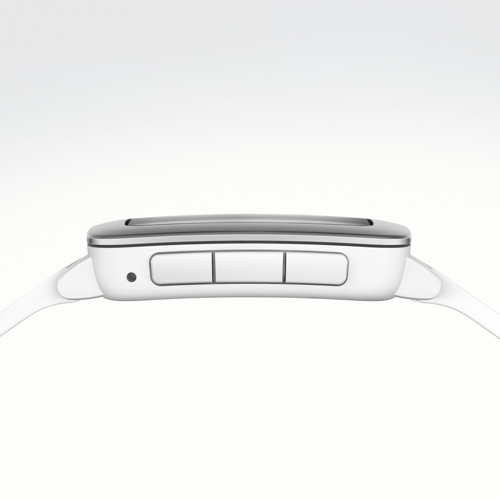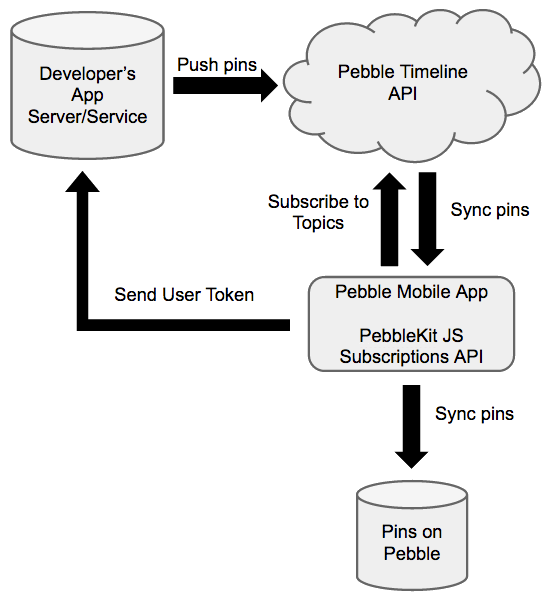Thursday, Pebble released a preview of its software development kit for its new smartwatch platform and Pebble Time device.
With SDK 3.0, the company touts the ease with which developers will be able to create new apps for Pebble Time, or let older apps take advantage of the new color screen. The preview features documentation for the new Timeline APIs as well, an emulator to test apps and a migration guide, to help them in the process.
See also: Hear From Pebble’s Eric Migicovsky At Wearable World Congress
The kit also offers a few more details of what app makers and consumers can expect with the new software and hardware.
Time To Upgrade
The original Pebble and the new Time share many of the same fundamental specifications, which should help minimize complication. For instance, both devices feature a 144 x 168 display resolution, four buttons—with three on the right and one on the left—and the same sensors for the accelerometer and compass. So there’s no need for developers to remap the inputs in their apps or adapt to a different screen size.

As for differences, the new watch will come bearing several. Time’s processor boasts a higher CPU frequency, 100 MHz compared to the original’s 64 MHz, which could offer snappier performance. The main hardware attractions, of course, are Time’s 64-color e-paper display and microphone, which the black-and-white previous model didn’t have.
The new developer kit also raised the limit on app sizes, more than doubling the limit in the old version, from 24k to 64k. The maximum cap on related resources jumped too, going from 96k to 256k.
See also: Meet The New Pebble Time—Though Getting One Will Take … Time
Pebble’s desire to reduce complexity and offer improvements seem evident in these changes. However, they also suggest that older hardware may not support the new and beefier Time apps so well.
Moving Forward, But Looking Back
Pebble offers a few resources to help orient app creators, including an emulator—which can be handy for testing, considering no one outside of the company actually has a Pebble Time device.
A company spokesperson explained that “the SDK now includes an entire emulator (in the cloud or on your local machine) so you can try out your apps before you get your Pebble Time.”
The kit also features a set of developer guides, including a “migration guide” (for updating old apps) and a backwards-compatibility guide. The latter covers tools in SDK 3.0 that let developers write or make changes once, and then compile two separate versions of the app tailored for each device: “By catering for both cases, you can ensure your app will run and look good on both platforms with minimal effort,” the guide reads. “This avoids the need to maintain two Pebble projects for one app.”
Apps relying on PebbleKit Android “will need to be re-compiled in Android Studio (or similar) with the PebbleKit 3.0 library,” but developers don’t have to make changes to their code. PebbleKit iOS apps won’t have to be re-compiled.

The other key component in the SDK is the Timeline guide, which explains how apps will work with Pebble’s new chronological structure for app data. The main idea involves putting data from multiple apps into one easily navigable place. In this context, developers will be able to “pin” certain types of data to this construct.
Pebble app developers may be wise to jump on these tools quickly, to make sure their apps are ready when Pebble Time ships. The device may become the company’s most popular yet—its new Kickstarter project has already exceeded its first record-breaking campaign, beating that $10.3 million figure. It’s now on track to become another record-breaker.
See also: Pebble Time Hits $1M On Kickstarter In Under An Hour
The current most-funded Kickstarter project set a benchmark of $13.3 million. As of this writing, Pebble Time has nabbed nearly 50,000 backers who have pledged more than $10.5 million in two days, with 29 more to go. After the campaign closes, the first units will ship near the end of May to those Kickstarter backers.
In other words, it’s time to get those apps ready.
Images courtesy of Pebble









